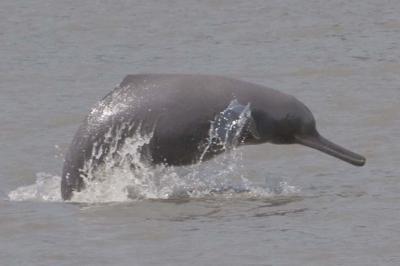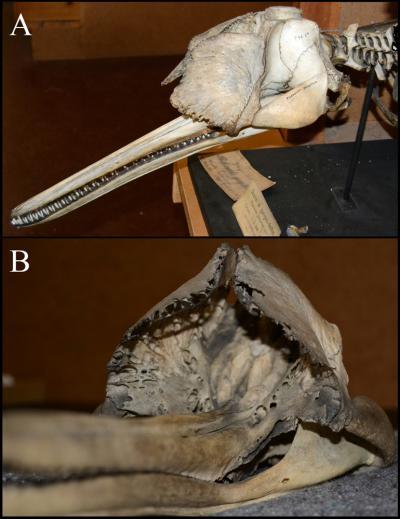Freshwater dolphins use echolocation signals that are quieter, more low-pitched and more frequent than those used by their marine counterparts, according to research published March 27 in the open access journal PLOS ONE by Frants Havmand Jensen from Woods Hole Oceanographic Institution and colleagues.
All toothed whales use bio-sonar signals to navigate and find prey, but the echolocation signals of marine animals are better understood than those used by endangered river dolphins. In this study, the authors recorded the signals of two endangered freshwater dolphin species within the Sundarban mangrove forest, and found that they produced signals that were much quieter than signals produced by marine dolphins.
"Freshwater dolphins live in complex environments where circuitous river systems restrict how far away prey might be found using echolocation, especially when compared to marine dolphins echolocating in the open ocean " says Jensen.
In addition, the Ganges river dolphin produced sounds nearly an octave lower than signals of similar-sized marine dolphins. Lower-pitched sounds are likely to be less effective for echolocation, but this species has evolved unique bony crests in their foreheads that may help them focus their low-frequent biosonar signals more efficiently.
The study offers a valuable tool to help conservation biologists in their efforts to prevent a decline of these endangered species. Small acoustic recorders are being increasingly used for supplementing visual surveys, and the study describes how differences in the biosonar signals may be used to discriminate between species, estimate population sizes and identify areas crucial to the two freshwater dolphins.

This is a Ganges river dolphin, taken by E. & R. Mansur, WCS.
(Photo Credit: Rubaiyat Mansur, Wildlife Conservation Society)

This is the cranial morphology of a Ganges river dolphin as seen from A) a left lateral and slightly anterior viewpoint, and B) an anterior viewpoint looking back along the anterior-posterior axis. Notice the unusual, highly porous bony maxillary crests that project anteriorly over the rostrum and nearly encircle the melon.
(Photo Credit: Anders Galatius, Aarhus University)
Source: Public Library of Science